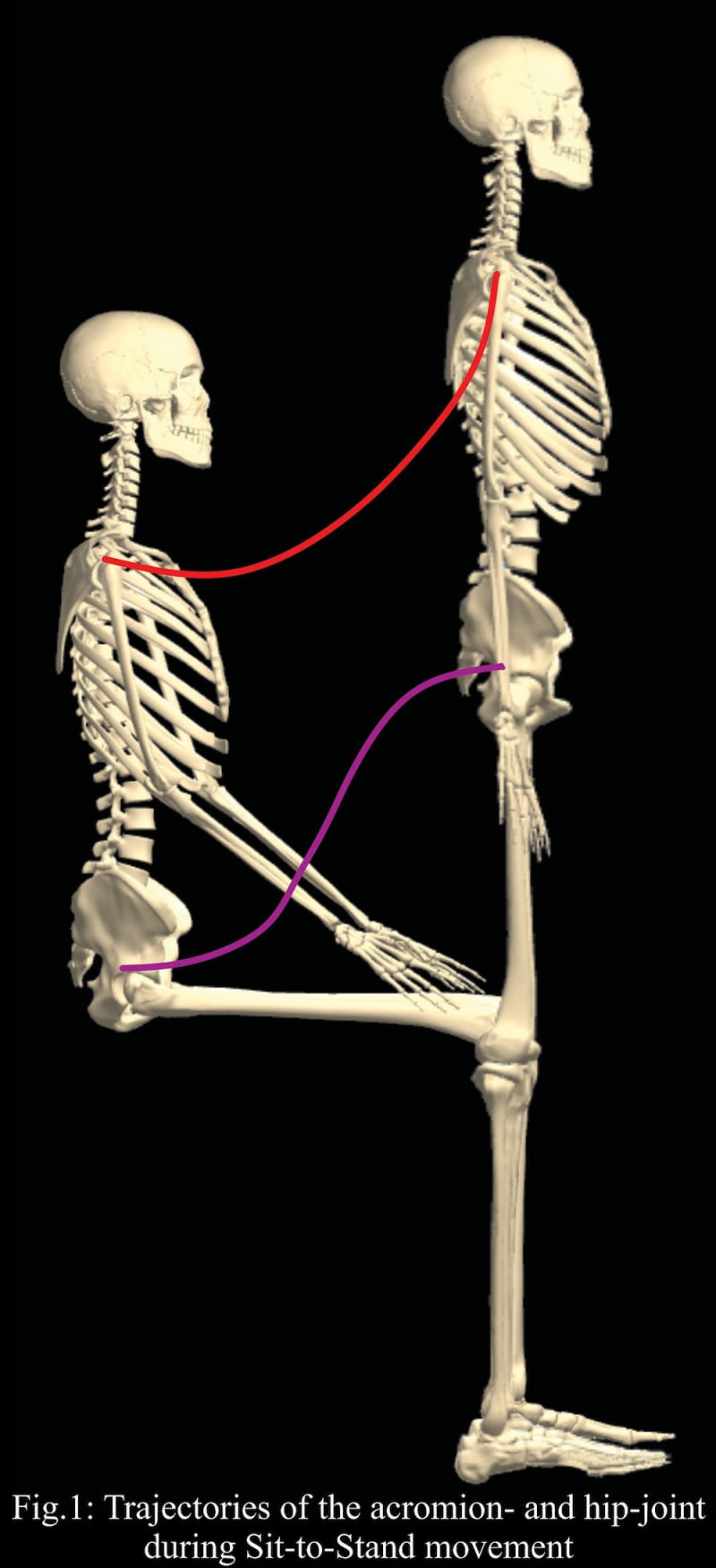
Mobility Assist (http://www.mobilityassist.net) is a multifunctional, self-operated, portable, and compact sit-to-stand (STS) device developed at Stony Brook University (SBU), NY in partnership with Biodex Medical Systems (http://www.biodex.com) and supported by a Research Foundation of SUNY Technology Accelerator Fund award. It assists elderly and disabled people with lower-body debilitating ailments to comfortably stand up, sit down, and walk with fall arrest and stability support. Unlike any other product in the market, this is the first device that lifts and lowers individuals along the natural path of motion trajectories of human body (Fig. 1), which reduces stresses on muscles and joints and stimulates functional neural pathways.
The patented technologies in the device are planar four-bar and six-bar linkage mechanisms that emulate the kinematics of a STS movement (Fig. 2). The SBU has licensed the technology to Biodex and a market-ready product is expected to be available by early 2017. Figure 3 shows a third generation six-bar mechanism based prototype, where a floating link of the mechanism follows the path of acromion while maintaining constant orientation for upper body comfort and supporting a user’s weight at the hip.
A basic mobility task performed by individuals is the STS movement followed by ambulation. STS is a biomechanically demanding task requiring muscle strength greater than other activities of daily life (ADL), such as ambulation or stair climbing. It is estimated that in U.S., there are 9.2 million people above age 65 with a mobility related disability, out of which 7.9 million use some sort of assistive device for supported walking or transporting and more than two million people older than 64 years have difficulty in rising from a chair. An inability to perform such a basic function adversely affects the quality of life for disabled individuals. In elderly people, the inability to perform this basic task can force them to be admitted to Assisted Living Facilities (ALF), lead to poor functioning in daily life, and may cause fall related accidents and demise.
This problem has unfortunate implications for care providers as well. It has been found that the patient handling tasks, such as lifting and transferring are the primary cause of musculoskeletal disorders (MSDs) among the nursing workforce. American Nursing Association estimates the direct annual cost for the U.S. workers out of work due to MSDs at $13-20.
Biodex conservatively estimates to first offer it as a physical medicine and rehabilitation product to 1% of the 46,000 ALFs and nursing homes equating to a sale of 460 units with gross profit approaching $1M in fifth year. The total addressable market is worth close to $162M (46,000 units times $3,529.5/unit).
The mobility assist and the underlying technology are at the cusp of creation of a successful product that could potentially enable millions of disabled people around the world to live with their loved ones or in ALFs independently and with dignity. Apart from the patients, the care givers also stand to benefit from this device by potentially reducing costly, life threatening back-injuries to them.
Video
-
Awards
-
 2016 Top 100 Entries
2016 Top 100 Entries
Like this entry?
-
About the Entrant
- Name:Anurag Purwar
- Type of entry:teamTeam members:Dr. Anurag Purwar Dr. Hari Pillai Thomas Galeotafiore
- Software used for this entry:Autodesk Inventor, Solidworks
- Patent status:patented








